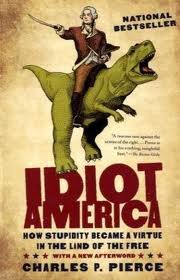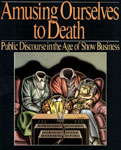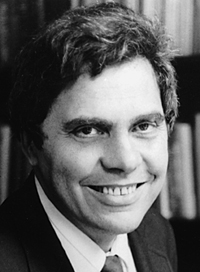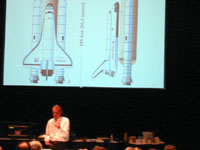
Idiot America
How Stupidity Became a Virtue in the Land of the Free
Charles Pierce (2009)
This short confection of a book has a serious message… When “cranks” become mainstream and large segments of the population take them seriously, our entire society is at risk! He’s not against people with unconventional ideas, in fact he considers them to be an asset… a sort of check on the status quo. But an increasing number of cranks have won mainstream acceptance, and this is very alarming! Politics and religion are particularly vulnerable to exploitation.
The narrative begins at a “young earth” theme park depicting a time when dinosaurs and humans lived side by side. Silly on the face of it, but considered a real possibility by many in the US. He then proceeds to tell the story of Ignatius Donnelly (1831 – 1901), the man responsible for several persistent modern myths including Atlantis. Fascinating!
Pierce returns time and again to the Three Great Premises:
- Any theory is valid if it sells books, soaks up ratings, or otherwise moves units.
- Anything can be true if someone says it loudly enough. Fact is that which enough people believe.
- Truth is determined by how fervently they believe it.
To premise #2 I would add the old standby: “Tell any lie often enough and it will be accepted as truth.” The “birther” and anti-vaccine movements come to mind, as does the statement made by John Kyl on the floor of the Senate that was “not intended to be a factual.” Too bad senators can’t be impeached for lying!
Number 3 is particularly disturbing because of what it implies for intellectual discourse. Individuals have no obligation to be skeptical or make reasoned arguments, they only need to believe something strongly enough until it “must be true.” Not a very good basis for informed discussion! No wonder we live in a world of information free voters.
And then there’s Bullshit, a topic laid bare in a delightful little book by Harry G. Frankfurt—On Bullshit (2005). He deftly explains the difference between BS and lying. When someone lies, they are making a conscious choice to deceive. They know the truth but wish to conceal it. The bullshitter on the other hand doesn’t know the truth and more importantly doesn’t care!
October 2013 Update: From Gail Collins at the NY Times, “Representative Ted Yoho was one of the very first members of Congress to verbalize the what-the-hey theory of global finance.” Putting the good faith and credit of the United States at risk? The very definition of a crank!


 His basic premise is that we have moved beyond the age of information-rich typography into a new world dominated by images and sound bites. The unit of discourse is the thirty second television commercial, which attempts to make an emotional connection with viewers rather than inform them. The result is a dumbing down of everything from the evening news to
His basic premise is that we have moved beyond the age of information-rich typography into a new world dominated by images and sound bites. The unit of discourse is the thirty second television commercial, which attempts to make an emotional connection with viewers rather than inform them. The result is a dumbing down of everything from the evening news to  Just back from attending this
Just back from attending this